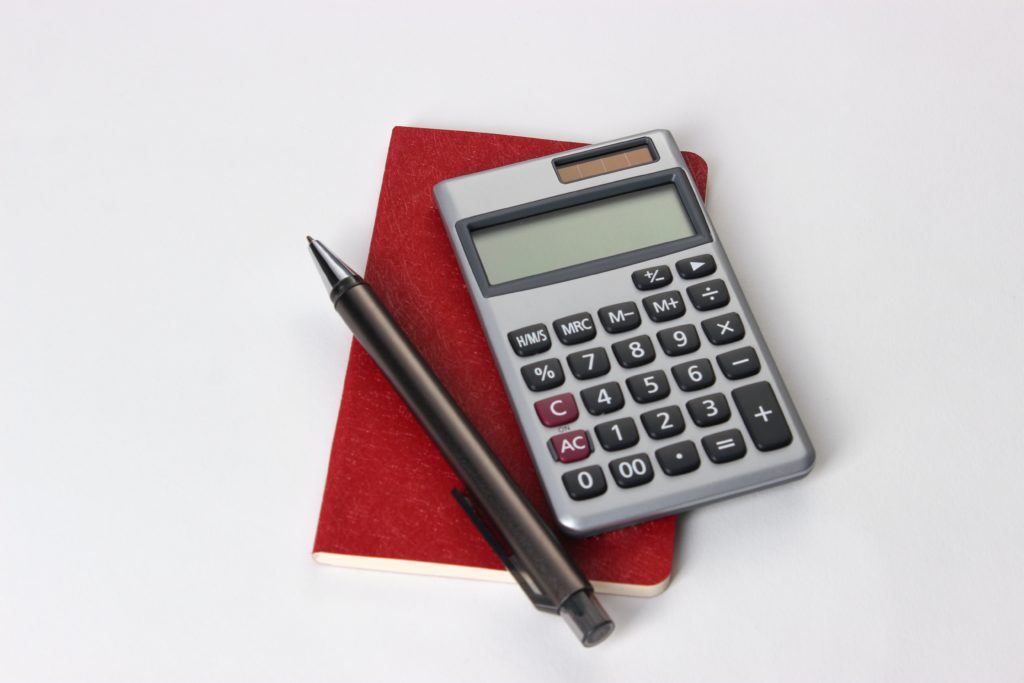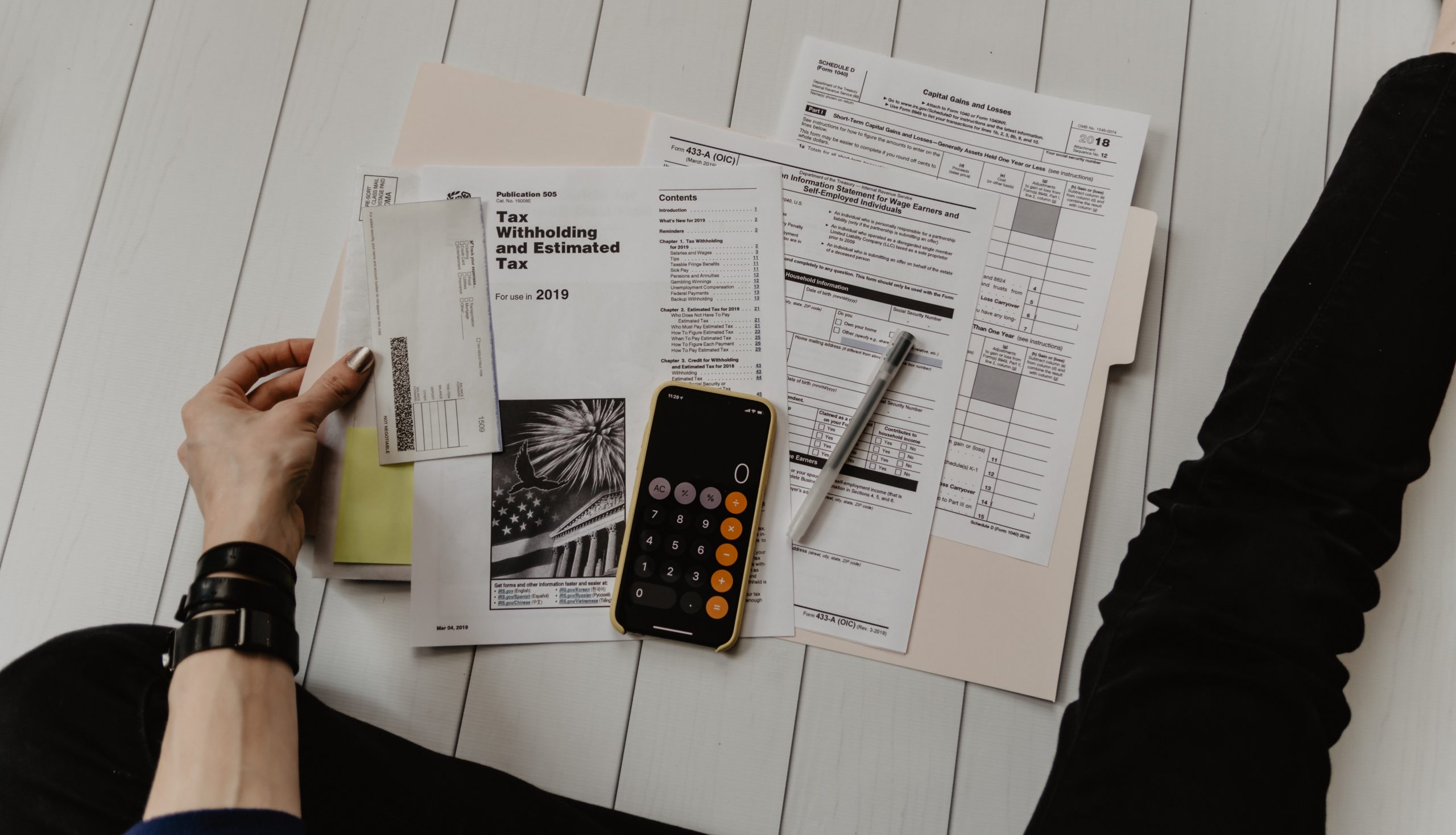by ASHLEY NIELSEN
Tax season happens every year, and yet many of us are still worried we’re going to owe thousands of dollars to the IRS. Whether you did them yourself using tax software or hire a CPA or tax expert, taxes are stressful. Many people don’t have to worry too much about taxes because their employer takes them out of their paychecks. All those individuals have to do is file their taxes yearly, and they’re more than likely to get a refund. However, many workers who are contractors, freelancers, or retirees get income differently. Instead of having taxes taken from their paychecks, these individuals must set money aside and pay them quarterly and annually.
Unfortunately, if you’re not a tax expert, it can be difficult to know how much you’re going to owe in taxes. Self-employed individuals must pay self-employment tax to cover social security and medicare taxes while also paying state and federal taxes quarterly. If you know your tax bracket, you can do some basic math to help you determine how much you’ll owe, but in most cases, you should work with an accountant and use tax software designed to automatically calculate your estimated tax payments every quarter by keeping track of your income and expenses.
Now, you might be wondering how much you should save throughout the year. The good news is that if you use tax software, you’ll know how much you owe every time you log in, making it easy to pay your taxes online. That being said, you still might be curious about what that all amounts to. In this article, we’ll discuss how much you should save to pay back in taxes.
How Much To Set Aside
 Experts agree you should set aside 15-30 percent of your profits for taxes. The exact amount will vary depending on tax credits and deductions, but by saving at least 15 percent, you won’t be too shocked come tax season. Good financial literacy is required to understand what we mean by profit. In this instance, we don’t mean revenue.
Experts agree you should set aside 15-30 percent of your profits for taxes. The exact amount will vary depending on tax credits and deductions, but by saving at least 15 percent, you won’t be too shocked come tax season. Good financial literacy is required to understand what we mean by profit. In this instance, we don’t mean revenue.
Instead, we’re referring to how much money you make after expenses are deducted from your revenue. If you track all of your expenses (which you should always do), you’ll owe less than you think in taxes. However, it’s always a good idea to have a buffer. Since self-employment tax is around 15 percent of your profit, you can expect to owe much more than that for federal and state taxes.
Most people should aim to save at least 30 percent of their profit for taxes to ensure they’ll have enough to cover their costs. If you’re paying quarterly taxes, you’ll end up owing much less at the end of the year. However, your total amount owed will still be the same.
Tips To Save For Taxes
Since you should plan to lose one-third of your income to taxes, you must find ways to save that money. This can be difficult if you’re not tracking income and expenses or you have poor spending habits. The most important thing you can do to ensure you have enough money to pay your taxes at the end of the year is to start saving immediately. There are a few ways to save for taxes, including:
Set Up A Savings Account
You can set up a savings account specifically for taxes to ensure your money doesn’t get touched until tax season. You can set up a savings account online with your bank or visit a local brand for more information about the types of accounts they offer. When you get paid, take 30 percent of that invoice payment and immediately transfer it into your tax savings account to prevent you from spending it. Of course, that amount won’t deduct your expenses, but it can ensure you have plenty of money left over for tax season.
Set Aside 30 Percent Of Every Payment
We just covered this a little bit, but it’s a great technique for ensuring you have enough money left over for taxes at the end of the year. You don’t need to set up a savings account specifically for taxes to do this, either. Instead, you can move money around your existing accounts or track your profit in a spreadsheet to help you understand how much money you’ll need to pay each quarter.
When To Start Saving
You should start saving for taxes immediately. As a small business owner, you never want to leave yourself without enough money to pay taxes because it means paying late fees that are even more costly. If you haven’t started saving for taxes, stop what you’re doing right now and look at your profit and loss statement to determine how much you’ve made so far this year. You can take that number and multiply it by 0.30 to give you an estimate of how much you’ll owe in taxes. Of course, if you’ve been paying quarterly taxes, this number will be much lower because you’ll need to deduct all expenses, including your existing tax payments.
When Do You Pay Taxes?
If you have an employer who takes taxes out of your paycheck, you only have to worry about paying taxes once a year by April 15. However, if you work for yourself, you’ll pay quarterly and annual taxes. Along with paying taxes on April 15, you’ll also pay estimated taxes on:
- April 15
- June 15
- September 15
- January 15
If you’re using tax software, remembering to pay your taxes will be easy since you’ll get notifications. It will also tell you how much you owe based on income and expenses throughout the quarter or year.
Give Yourself A Refund
Employees typically get tax refunds during tax season because they overpaid in taxes. However, that’s not usually the case for the self-employed. Luckily, if you’ve followed our tips, you may have some money left over after paying your taxes. Take any money you left over and give yourself a tax refund or use it for paying taxes next quarter, giving you a jump start on your next tax return.







